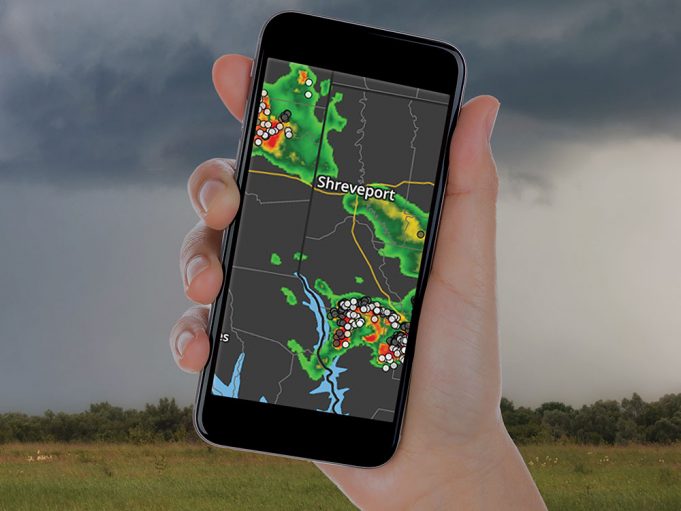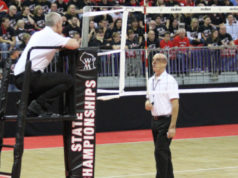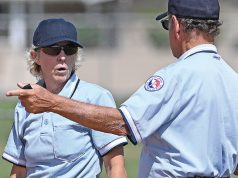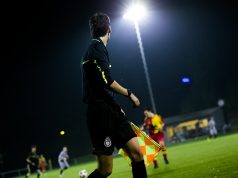In the not-so-distant past, the protocol for handling lightning was straightforward for officials working outdoor sporting events at the amateur levels. If lightning was visible or thunder was heard, play was suspended for a minimum of 30 minutes; if more lightning was seen or thunder heard during that 30-minute window, the clock restarted. Play did not resume until 30 lightning/thunder-free minutes had passed.
That protocol was in place for NFHS and NCAA contests (and for many other groups, including USA Softball, for instance).
But some believed there should be an alternative to this one-size-fits-all approach. Jeremy Schlitz, the athletic director for the city of Madison (Wis.) public high schools, spoke with Referee in 2017 for a story on lightning-related issues. While acknowledging that officials should always err on the side of caution and safety, he noted that under the traditional protocol there were occasions when play was suspended unnecessarily. “There are times, depending on your venue, when you may be able to see a storm 30 or 40 miles away and that storm lighting the sky up,” he said at the time.
“With the technology we have and the app that we have, people can see that the storm is 32 miles away and moving away from us, so why are we suspending play?”
This past March, the NFHS revised its lightning protocol. The basic framework was relatively unchanged — visible lightning or thunder requires a 30-minute suspension of play; if there is additional lightning or thunder the 30-minute clock restarts. But the NFHS added additional language, which reads in part:
“When lightning-detection devices or mobile phone apps are available, this technology could be used to assist in making a decision to suspend play if a lightning strike is noted to be within 10 miles of the event location. … Hearing thunder or seeing lightning should always take precedence over information from a mobile app or lightning-detection device.”
Bob Colgate, NFHS director of sports and sports medicine, noted that the organization’s lightning recommendations were updated in part in response to advancing technology.
Lightning-detection devices and mobile apps are available
“We know there is new technology. You see lightning-detection devices and mobile apps are available,” he said. “The technology, and here’s the key word, could be used. It doesn’t say shall be used. It could be used in making a decision to suspend play if lightning is detected.”
Colgate notes that lightning-detection devices or apps can be useful tools but says contest managers should not be relied on exclusively when determining whether to suspend a contest because of severe weather.
“The consultants went round and round on that one a little bit,” he said. “They said, ‘You want to be very careful.’ Because there is a delay on apps and different things with that. You just can’t rely on the app because there may be a delay on the information coming in and the storm may be on top of you.”
The updated NFHS protocol also addresses the issue of lightning that may be at some distance from the game site: “At night, under certain atmospheric conditions, lightning flashes may be seen from distant storms. In these cases, it may be safe to continue an event. If no thunder can be heard and the flashes are low on the horizon, the storm may not pose a threat. Independently verified lightning detection information would help eliminate any uncertainty.”
Mark Jones, the director of officials for the Alabama High School Athletic Association, said the organization has embraced the revised NFHS lightning policy, which Jones notes allows a practical approach to the issue of severe weather.
Jones recalled an occasion when he was observing a football game in Decatur and could see lightning from a thunderstorm near Birmingham, some 85 miles to the south. “Under the old lightning policy, we would have been delayed, because you could see lightning. The new policy makes a lot more sense, because at night, especially down in the South, you can see lightning (a considerable distance) away.”
None of this makes things easier for officials, who in some instances will now have the added burden of deciding if visible lightning is close enough to warrant halting the contest.
Referee legal expert Alan Goldberger said he is wary of the new guidelines. “I can’t imagine under what circumstances all this is helpful,” he said. “Lightning detection devices have been around for a long time and I’m sure they’re always getting better, but they’re devices and sometimes they work and maybe sometimes they don’t work. And atmospheric conditions are such that the device may not pick up and transmit what it’s supposed to in a timely fashion.”
Goldberger said the new policy will fuel the arguments of those who push to continue a game in potentially hazardous conditions.
“What’s going to happen now,” he said, “is we’re going to go out to work a game and one of us will notice some lightning off in the distance and we’ll suspend the game and then someone will say, ‘They’ve changed that now, under certain atmospheric conditions (play can continue), you can tell it’s far away and it’s at night.’ … Those people will be the first to point fingers at the officials if somebody is struck by lightning, so I just don’t see what it adds to the situation.”
The bottom line is the officials still have the final say in determining when play should be suspended because of inclement weather. The new guidelines, assuming your state has adopted them, does allow some latitude if lightning is a substantial distance from the game site. But they should not be used as justification for continuing a contest in potentially hazardous conditions.
What's Your Call? Leave a Comment:
Note: This article is archival in nature. Rules, interpretations, mechanics, philosophies and other information may or may not be correct for the current year.
This article is the copyright of ©Referee Enterprises, Inc., and may not be republished in whole or in part online, in print or in any capacity without expressed written permission from Referee. The article is made available for educational use by individuals.



















